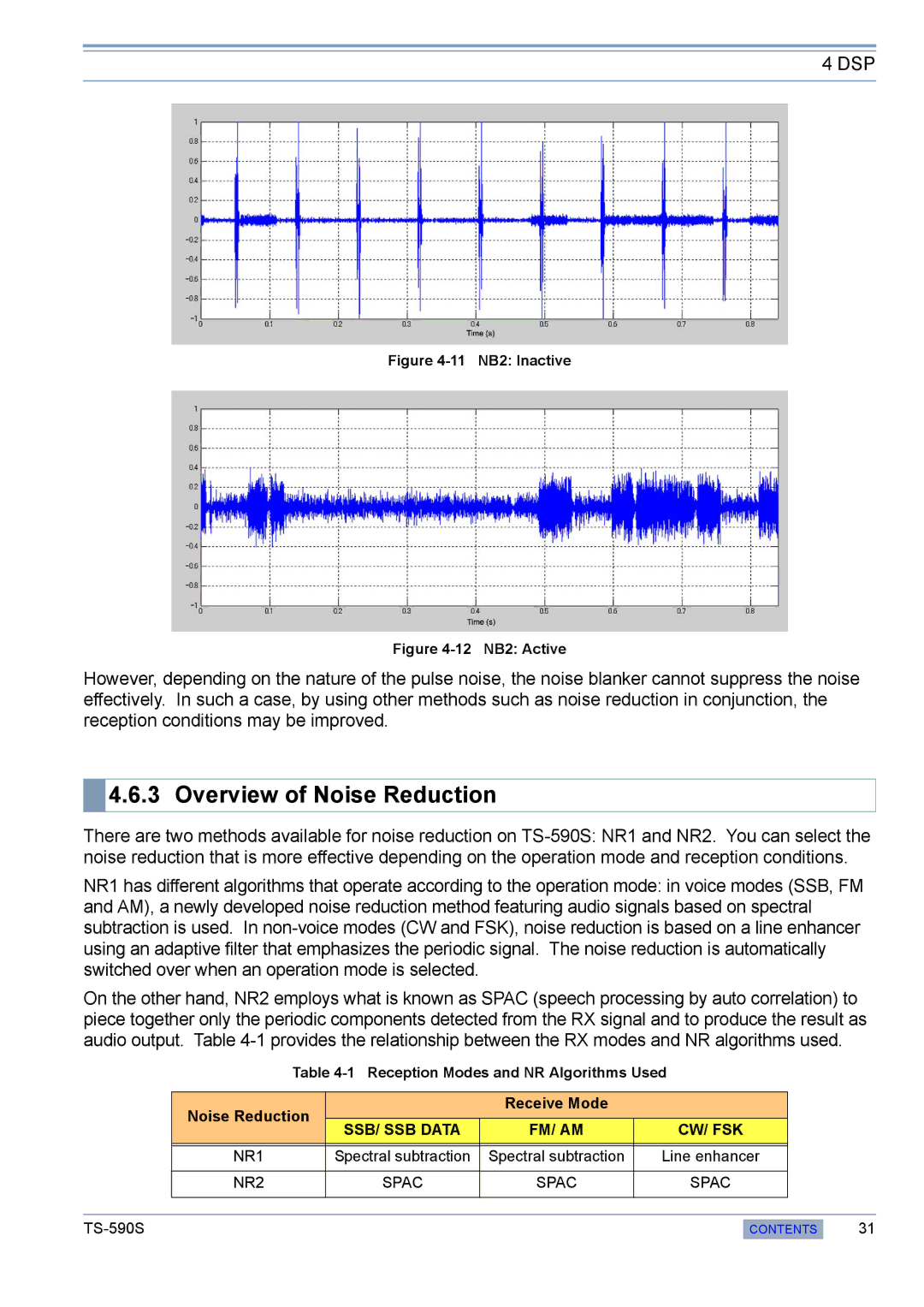
4 DSP
Figure 4-11 NB2: Inactive
Figure 4-12 NB2: Active
However, depending on the nature of the pulse noise, the noise blanker cannot suppress the noise effectively. In such a case, by using other methods such as noise reduction in conjunction, the reception conditions may be improved.
 4.6.3 Overview of Noise Reduction
4.6.3 Overview of Noise Reduction
There are two methods available for noise reduction on
NR1 has different algorithms that operate according to the operation mode: in voice modes (SSB, FM and AM), a newly developed noise reduction method featuring audio signals based on spectral subtraction is used. In
On the other hand, NR2 employs what is known as SPAC (speech processing by auto correlation) to piece together only the periodic components detected from the RX signal and to produce the result as audio output. Table
Table
Noise Reduction |
| Receive Mode |
| |
SSB/ SSB DATA | FM/ AM | CW/ FSK | ||
| ||||
|
|
|
| |
NR1 | Spectral subtraction | Spectral subtraction | Line enhancer | |
|
|
|
| |
NR2 | SPAC | SPAC | SPAC | |
|
|
|
|
CONTENTS
31
